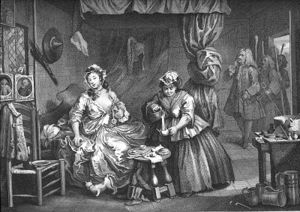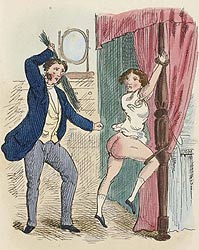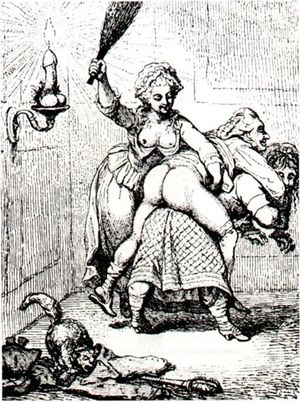The English Vice


"The English Vice" (from French "le vice anglais") is a term for erotic flagellation that came up in Europe in the 18th/19th century. It reflects the common belief that the sexual passion for whipping and spanking is a trend that has its origins and/or main fandom in England.
History
The potential for sexual arousal among participants or viewers of Western European medieval religious ceremonies involving flagellation remains a matter for speculation. In any case there is an early fifteenth-century Catalan painting, Flagellation of Christ, in which the floggers certainly appear to be deriving sexual pleasure from their work .[1]
Renaissance humanist Pico della Mirandola (1463–1494) described the passive flagellatory desires of a friend, which he found both puzzling and amusing.
Although erotic flagellation is often considered to be le vice anglais (The English Vice) par excellence, the first medico-scientific treatise on flagellation probably came from the German physician Johann Heinrich Meibom (1590-1655): De Flagrorum Usu in Re Veneria & Lumborum Renumque Officio (On the Use of Rods in Venereal Matters and in the Office of the Loins and Reins), was first published in Leiden in 1629. He also wrote the first overtly pornographic work on the subject of flagellation Tractus de usu flagrorum in re Medica et Veneria in 1639. The English translation A Treatise on the Use of Flogging was published in 1718. With the appearance of this book, flagellation became a passion throughout Europe, so much so that the French soon dubbed it le vice anglais, a nickname which would stick for centuries.
The connection between pedagogical punishment in English schools and an addiction to le vice anglais in later life is found in Thomas Shadwell's play The Virtuoso (1676): An old libertine named Snarl asks a prostitute, Mrs Figgup, to bring out the birch rods as reminiscence of whippings in his former days at Westminster School.
By 1732, when the artist William Hogarth illustrated the life of a young woman who became a London prostitute, he included a birch rod in the picture, hanging on the wall above her bed (see upper image). Flagellatory brothels came up in London in the late 18th century and flourished particularly in the 19th century. An example of a famous upper-class London flagellatory brothel was the one by Theresa Berkley (17??-1836).
"German" vs. "English"
In German language, "Englisch" or "Englische Erziehung", in sexual contexts, refers to erotic spanking, discipline, and other (soft) forms of BDSM play. This is interesting as in countries outside Germany, the same is nowadays often called "German".
References
- ↑ Gibson, Ian: The English Vice: Beating, Sex and Shame in Victorian England and After, Duckworth, London: 1978 (ISBN 0715612646).
See also
External links
Chat rooms • What links here • Copyright info • Contact information • Category:Root
